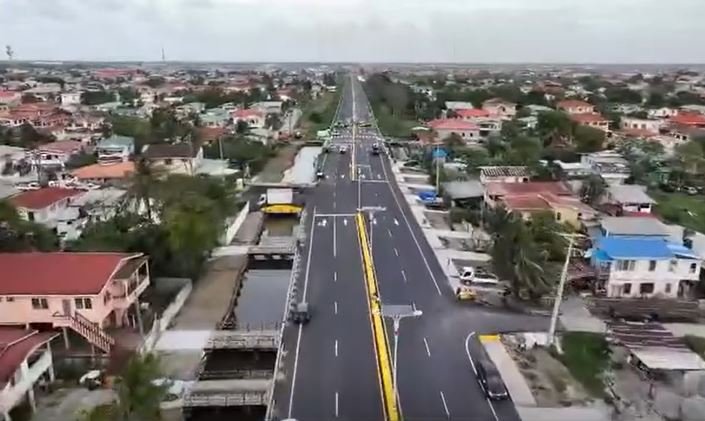Close

The Government of Guyana is delivering on its commitment to modernize infrastructure and boost economic opportunity in Region 4 (Demerara–Mahaica) through large-scale expansions of the East Coast and East Bank road networks. These transformative projects are easing chronic traffic congestion while creating thousands of jobs, redefining daily life for residents across the capital region.
The East Coast Demerara (ECD) highway expansion, running from Better Hope to Belfield, has delivered a major upgrade to transportation capacity. The project widened key stretches to four lanes, constructed new bridges and roundabouts, and installed modern lighting—all designed to improve safety and traffic flow. According to the Ministry of Public Works, this initiative has provided employment for over 1,000 people from surrounding communities, contributing directly to household incomes and local skills development (Ministry of Public Works, 2024).
Meanwhile, along the East Bank Demerara (EBD) corridor, complementary expansions—such as the Mandela to Eccles highway and the new Diamond to Mocha four-lane road—are making a tangible difference for commuters and businesses alike. These works have significantly reduced travel time between Georgetown and outlying areas. The Guyana Bureau of Statistics reports that average peak-hour commute time from Diamond to Georgetown dropped by nearly 40% in 2024 compared to 2020 figures (Guyana Bureau of Statistics, 2024).
Beyond improving transport efficiency, these projects are fueling economic growth. Improved road access is spurring new private investments in housing, retail, and industry in rapidly growing areas like Providence, LBI, and Ogle. The Central Housing and Planning Authority notes that more than 5,000 new house lots have been allocated in areas connected by these upgraded roads, helping to meet the demand for affordable housing and urban development (CHPA, 2024).
In addition to boosting mobility and economic activity, the government has prioritized safety and sustainability in these upgrades by incorporating pedestrian walkways, modern drainage solutions, and green landscaping. This approach underscores a commitment to development that benefits all citizens while respecting the environment.
Ultimately, Region 4’s road expansion projects are more than construction—they are vital links driving social progress and economic opportunity. By cutting congestion, creating jobs, and fostering growth, they demonstrate what real, lasting progress looks like.

The Guyana Project is an independent media platform delivering fact-checked, ground-level reporting on politics, economy, and public life in Guyana. With a focus on transparency and development, we bring unfiltered news and thoughtful analysis to help shape a more informed, forward-looking nation.

Building Connections, Driving Opportunity: The Impact of Road Expansion in Region 4

Lorem Ipsum is simply dummy text of the printing and typesetting industry. Lorem Ipsum has been the industry’s standard dummy text ever since the 1500s, when an unknown printer took a galley of type and scrambled it to make a type specimen book. It has survived not only five centuries, but also the leap into electronic typesetting, remaining essentially unchanged. It was popularised in the 1960s with the release of Letraset sheets containing Lorem Ipsum passages, and more recently with desktop publishing software like Aldus PageMaker including versions of Lorem Ipsum.
t is a long established fact that a reader will be distracted by the readable content of a page when looking at its layout. The point of using Lorem Ipsum is that it has a more-or-less normal distribution of letters, as opposed to using ‘Content here, content here’, making it look like readable English. Many desktop publishing packages and web page editors now use Lorem Ipsum as their default model text, and a search for ‘lorem ipsum’ will uncover many web sites still in their infancy. Various versions have evolved over the years, sometimes by accident, sometimes on purpose (injected humour and the like).
Contrary to popular belief, Lorem Ipsum is not simply random text. It has roots in a piece of classical Latin literature from 45 BC, making it over 2000 years old. Richard McClintock, a Latin professor at Hampden-Sydney College in Virginia, looked up one of the more obscure Latin words, consectetur, from a Lorem Ipsum passage, and going through the cites of the word in classical literature, discovered the undoubtable source. Lorem Ipsum comes from sections 1.10.32 and 1.10.33 of “de Finibus Bonorum et Malorum” (The Extremes of Good and Evil) by Cicero, written in 45 BC. This book is a treatise on the theory of ethics, very popular during the Renaissance. The first line of Lorem Ipsum, “Lorem ipsum dolor sit amet..”, comes from a line in section 1.10.32.